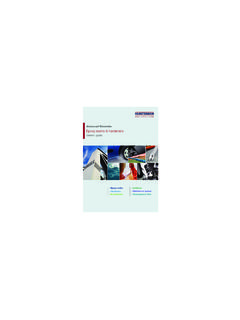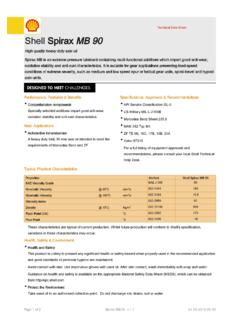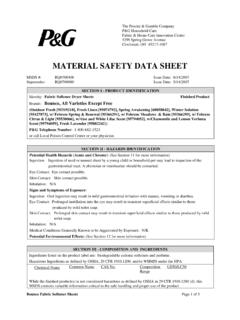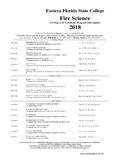Transcription of Arathane Polyurethane Casting System - FARIX
1 Advanced Materials Arathane Polyurethane Casting System Arathane CW 5620 Polyol 100 pbw Arathane HY 5610 Isocyanate 22 pbw Polyurethane , halogen free, Casting and impregnating System for processing and curing at room temperature. Soft multipurpose Polyurethane System for pressure sensitive devices. Available in various colors. Application Transformers, filters, capacitors etc. Processing methods Casting / Impregnating. Manually or with automatic mixing and dosing equipment. Key properties Halogen free System . Excellent flow properties . Good thermal conductivity. Non abrasive Casting System . Good thermal shock resistance. Flammability: UL 94 V-0 (6 mm). Edition Replaces Edition July 2004 May 2004 CW 5620 / HY 5610 July 2004 2/5 Product Data (Guideline Values) Arathane CW 5620 Polyol, containing mineral filler Viscosity at 25 C ISO 2555 mPa*s 2500 Specific Gravity at 25 C ISO 1675 g/cm Flash point ISO 1523 C > 150 As supplied form Colored liquid.
2 Arathane HY 5610 Isocyanate Viscosity at 25 C ISO 2555 mPa*s 90 Specific Gravity at 25 C ISO 1675 g/cm Flash point ISO 1523 C > 200 As supplied form Brown liquid. CW 5620 / HY 5610 July 2004 3/5 Processing Data (Guideline Values) Mix Ratio Parts by weight Parts by volume CW 5620 Polyol 100 100 HY 5610 Isocyanate 22 25 Gel Time, Viscosity and Curing Mix Viscosity at 25 C CW 5620 / HY 5610 Rheomat mPa*s 1300 Gel time at 25 C CW 5620 / HY 5610 Gelnorm min 70 Pot life (Time to reach 5000 mPa*s) CW 5620 / HY 5610 Rheomat min 25 Minimum Curing Cycle 24 hours at RT or 6 hours at 80 C Processing and Storage (Guideline Values) Preparation CW 5620 contains fillers, which tend to settle over time. It is therefore recommended to carefully homogenize the complete contents of the container before use. In the storage vessels of the production equipment, the pre-filled products should be stirred up from time to time to avoid sedimentation and irregular metering.
3 Mixing Brief degassing of the mix under 2 10 mbar vacuum improves the mixture homogeneity and enhances the dielectric properties of the castings. Mixing of the components can be done at room temperature, heating of the polyol is not required. Curing To determine whether crosslinking has been carried to completion and the final properties are optimal, it is necessary to carry out relevant measurements on the actual object or to measure the glass transition temperature. Different gel and cure cycles in the customer s manufacturing process could lead to a different degree of crosslinking and thus a different glass transition temperature. Storage Conditions Store the components in a dry place at RT, in tightly sealed original containers. Under these conditions, the shelf life will correspond to the expiry date stated on the label.
4 After this date, the product may be processed only after reanalysis. Partly emptied containers should be tightly closed immediately after use. HY 5610 must be protected from moisture. Storage tanks should be blanketed with dry air or nitrogen. Storage at temperatures above 50 C is not recommeded, since this can lead to the formation of insoluble solids and also the viscosity buid-up increases on extended storage. Storage at low temperature is not recommeded because it may lead to some crystallisation. Crystallised material must be melted out immediately by short time heating. For information on waste disposal and hazardous products of decomposition in the event of a fire, refer to the Material Safety Data Sheets (MSDS) for these particular products. CW 5620 / HY 5610 July 2004 4/5 Mechanical and physical properties (Guideline Values) Determined on standard test specimen at 23 C.
5 Cured for 24h/RT + 6h/80 C Glass transition temperature ISO 6721 C 20 Shear modulus ISO 6721 MPa 55 Max. service temperature IEC 60085 Class B Relative temperature index IEC 60216 RTI tbd Tensile modulus ISO 527 MPa 21 Tensile strength ISO 527 MPa 7 Elongation at break ISO 527 % 70 Thermal linear coefficient ISO 11359-2 Alpha 1 Alpha 2 ppm/K 55 150 Thermal conductivity ISO 8894-1 W/mK Hardness DIN 53505 Shore A / D 85 / 40 Glow-wire test (850 C) IEC 60695-2-11 VDE 0471 passed Flammability UL 94 V-0 (6 mm) Water absorption ISO 62/80 1 day at 23 C 10 days at 23 C 30 min at 100 C % by wt.
6 Electrical properties (Guideline Values) Determined on standard test specimen at 23 C. Cured for 24h/RT + 6h/80 C Dielectric strength (2 mm specimen) IEC 60243-1 kV/mm 25 Dielectric loss factor (tan , 50Hz, 25 C) IEC 60250 % 11 Dielectric constant ( r, 50Hz, 25 C) IEC 60250 6 Volume resistivity ( , 25 C) IEC 60093 cm 1013 Electrolytic corrosion IEC 60426 grade A/1 Tracking resistance IEC 112/79 CTI > 600 CW 5620 / HY 5610 July 2004 5/5 Industrial hygiene Mandatory and recommended industrial hygiene procedures should be followed whenever our products are being handled and processed. For additional information please consult the corresponding Safety Data Sheets and the brochure "Hygienic precautions for handling plastics products.
7 Handling Precautions Safety precautions at workplace: protective clothing gloves arm protectors goggles/safety glasses respirator/dust mask Skin protection: before starting work after washing Cleaning of contaminated skin Clean shop requirements Disposal of spillage Ventilation: of workshop of workplace Yes. Essential. Recommended when skin contact likely. Yes. Recommended. Apply barrier cream to exposed skin. Apply barrier or nourishing cream. Dab off with absorbent paper, wash with warm water and alkali-free soap, then dry with disposable towels. Do not use solvents. Cover workbenches, etc. with light coloured paper. Use disposable beakers, etc. Soak up with sawdust or cotton waste and deposit in plastic-lined bin. Renew air 3 to 5 times an hour. Exhaust fans. Operatives should avoid inhaling vapors. First Aid Contamination of the eyes by resin, hardener or Casting mix should be treated immediately by flushing with clean, running water for 10 to 15 minutes.
8 A doctor should then be consulted. Material smeared or splashed on the skin should be dabbed off, and the contaminated area then washed and treated with a cleansing cream (see above). A doctor should be consulted in the event of severe irritation or burns. Contaminated clothing should be changed immediately. Anyone taken ill after inhaling vapours should be moved out of doors immediately. In all cases of doubt call for medical assistance. Note Arathane is a registered trademark of Huntsman LLC or an affiliate thereof in one or more countries, but not all countries. Huntsman LLC Registered trademark APPROVED TO ISO 9000 ff All recommendations for use of our products, whether given by us in writing, verbally, or to be implied from results of tests carried out by us are based on the current state of our knowledge.
9 Notwithstanding any such recommendations the Buyer shall remain responsible for satisfying himself that the products as supplied by us are suitable for his intended process or purpose. Since we cannot control the application, use or processing of the products, we cannot accept responsibility therefore. The Buyer shall ensure that the intended use of the products will not infringe any third party's intellectual property rights. We warrant that our products are free from defects in accordance with and subject to our general conditions of supply.






